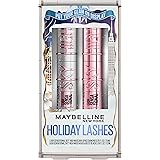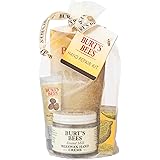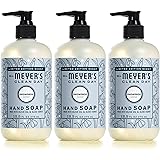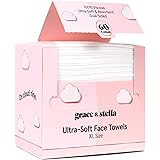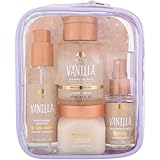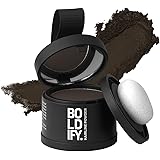Are you unknowingly sabotaging your hair health with popular haircare products? Many individuals find themselves caught in a cycle of disappointment, investing in seemingly promising solutions that ultimately deliver less than optimal results. The accompanying video critically examines several common haircare products, revealing their potential downsides. This article aims to expand upon those crucial insights, providing a deeper understanding of why certain products fall short and how informed choices can pave the way to genuinely healthy, vibrant hair.
The Deceptive Lure of Surface Shine: Why Some Haircare Products Harm More Than Help
Often, a product’s immediate appeal can mask its long-term detrimental effects. A shiny finish, while desirable, does not always signify true hair health. Indeed, certain formulations merely coat the hair strand, creating an illusion of vitality without addressing underlying issues. This superficial treatment can delay proper care, leading to increased damage over time. Consequently, a comprehensive understanding of product ingredients becomes paramount for discerning consumers.
Beyond the Illusion: The Color Wow Dream Coat Phenomenon
The Color Wow Dream Coat, a product often featured in extensive influencer campaigns, exemplifies this deceptive allure. While it promises a glossy, frizz-free appearance, its mechanism primarily involves coating the hair. For years, clients have reported an initial satisfaction, often requesting its continued use. However, sustained application of such products, especially without a robust foundational haircare routine, can prove problematic. Essentially, a protective yet temporary layer is applied, which can prevent beneficial nutrients from penetrating the hair shaft. Hair health is ultimately compromised beneath this cosmetic veil, leading to increased dryness and breakage over extended periods.
When healthy hair is consistently overlooked, damage accumulates. This scenario is akin to painting over rust; the problem persists, merely out of sight. Genuine hair vitality stems from internal strength and proper hydration. Therefore, reliance on products that only offer superficial improvement, rather than substantive conditioning and repair, is largely discouraged. A balanced haircare regimen, focusing on regular cleansing, deep conditioning, and protective measures, is essential for maintaining natural luster and resilience. The “Trinity Routine,” for instance, emphasizes these core principles for lasting hair health.
Navigating the Natural vs. Effective Debate in Haircare Products
The burgeoning market for “natural” and “organic” haircare products presents another area of contention. Consumers are often drawn to these labels, believing they inherently guarantee superior performance and safety. Nevertheless, the efficacy of natural formulations can vary significantly. Manufacturing effective haircare involves complex chemistry, ensuring proper ingredient balance and delivery. Simply being “natural” does not automatically equate to providing the necessary slip, cleansing power, or conditioning properties that hair requires.
The Pitfalls of Unformulated “Natural” Products: The Honest Company Example
Personal experimentation, as observed in the video, often reveals the shortcomings of certain “natural” haircare products. For instance, Honest Company’s leave-in conditioner was noted for its severe lack of “slip.” This term refers to a product’s ability to help a brush glide through hair smoothly, aiding in detangling. Without adequate slip, brushing can become a painful and damaging ordeal, leading to significant hair breakage. Consequently, what begins as a quest for natural beauty can paradoxically result in physical hair trauma. This highlights a critical point: effective formulation, regardless of its “natural” or synthetic origin, must prioritize functional performance.
Furthermore, the absence of certain synthetic ingredients, often perceived as negative, can sometimes compromise a product’s ability to perform essential functions. For instance, specific types of emollients or conditioning agents are meticulously engineered to provide superior detangling and frizz control. While the desire for chemical-free options is understandable, it is crucial to ensure that alternative ingredients can adequately fulfill these vital roles. Otherwise, users may find themselves battling persistent tangles and dryness, thereby undermining their hair health goals.
The Promise vs. Reality of Custom Haircare Solutions
Customized haircare solutions have gained considerable traction, promising a bespoke experience tailored to individual hair needs. The appeal of a product formulated precisely for one’s unique hair type, texture, and concerns is undeniable. However, the execution of this concept at scale presents inherent challenges. Often, the extensive questionnaires designed to gather user data may not translate into genuinely effective or uniquely superior formulations. The science behind custom blending is intricate, requiring precise ingredient ratios and compatibility for optimal results.
When Personalization Fails: Insights on Prose Haircare
Prose haircare, one such customized service, has been cited for its potential shortcomings. Anecdotal evidence suggests that users, despite undergoing detailed consultations, may experience issues such as oily residue and clumping hair. This indicates that the customized shampoos, intended to cleanse, may not perform this fundamental task adequately. When a shampoo fails to effectively remove oils and product buildup, the scalp environment can become unbalanced, leading to greasy roots and dull lengths. This condition can exacerbate existing problems and even trigger new ones, such as irritation or increased product accumulation.
The primary function of any shampoo is to cleanse the hair and scalp without stripping essential moisture. If a custom formulation cannot achieve this basic balance, its personalized claims become moot. Furthermore, continuous buildup can prevent conditioners and treatments from properly nourishing the hair. Therefore, while the concept of tailored haircare is appealing, consumers are advised to critically evaluate actual performance over marketing promises. A reliable, well-formulated standard shampoo that effectively cleanses can often provide a more beneficial foundation for hair health than a poorly performing custom option.
Distinguishing Genuine Professional Haircare from Imitations
For many, the transition from drugstore brands to “professional” haircare products represents an important step in upgrading their routine. This shift is often motivated by a desire for improved quality and better results, similar to how individuals evolve their skincare regimens. However, the market is saturated with products positioned as “professional” that may not meet the true standards of salon-grade formulations. This ambiguity can lead to significant consumer disappointment and a distrust in higher-priced options.
The “Fake Professional” Trap: The Case of Biolage
Biolage, despite its relatively higher price point and widespread availability, is often identified as a prime example of a “fake professional” brand. Many consumers, seeking an upgrade from mass-market options, turn to Biolage only to find negligible difference in performance. This experience can be highly discouraging, leading individuals to conclude that all professional shampoos are ineffective or overpriced. However, the issue often lies not with professional products in general, but with specific brands that fail to deliver on their premium positioning. Genuine professional haircare typically features higher concentrations of active ingredients, more refined formulations, and a clearer focus on specific hair needs. These products are often developed with extensive research and salon testing, ensuring superior performance. Thus, for those seeking true professional quality, careful selection beyond widely available “salon brands” is crucial.
The disappointment associated with underperforming “professional” products can deter individuals from exploring the vast array of truly effective solutions available. It is similar to forming an opinion on an entire genre of entertainment based on a single, subpar experience. Consequently, consumers may revert to cheaper, less effective options, never realizing the transformative potential of genuinely high-quality haircare. Educating oneself on reputable salon brands and understanding the distinctions in ingredient quality and concentration is essential. Furthermore, seeking recommendations from trusted stylists can guide consumers toward products that truly elevate their hair health and appearance.
Understanding True Hair Repair: Beyond Superficial Claims
Damaged hair is a common concern, prompting many to seek out “repair” shampoos and conditioners. The market is replete with products claiming to mend split ends, strengthen strands, and restore hair to its former glory. Nevertheless, it is crucial to understand the fundamental limitations of shampoo in the repair process. The primary function of shampoo is to cleanse the hair and scalp, removing dirt, oil, and product buildup. While some conditioning ingredients may be present, a shampoo’s contact time with the hair is typically too brief to effect significant structural repair.
Debunking “Repair” Shampoos: The Olaplex Shampoo Misconception
The idea that a shampoo can genuinely repair damaged hair is often likened to expecting a body wash to act as a long-lasting deodorant. These are distinctly different functions. When shampoos claim “repair,” they often achieve a perceived improvement by coating the hair with heavy conditioning agents or certain polymers. While this might temporarily smooth the hair’s surface, it typically leads to product buildup. This buildup, in turn, can prevent vital moisture and truly reparative ingredients from penetrating the hair shaft. Consequently, damaged hair, which desperately needs hydration and targeted treatments, becomes further compromised by an impermeable layer of residue. For example, some Olaplex products are highly recommended for repair, yet their shampoos may not offer the same reparative benefits as their dedicated treatments. This distinction highlights that efficacy varies greatly across different products within the same brand.
For individuals with damaged hair, a more effective strategy involves using targeted repair treatments. Products such as pre-shampoo intensive treatments, deep conditioning masks, and leave-in bond-building treatments are specifically formulated to address structural damage. These products often contain higher concentrations of reparative ingredients, such as proteins, amino acids, and specialized polymers, and are designed for longer contact times with the hair. Such dedicated repair products work by penetrating the hair shaft, reinforcing its internal structure, or sealing the cuticle. Therefore, prioritizing a gentle, effective cleansing shampoo and coupling it with potent repair treatments is a far more constructive approach to restoring hair health than relying on “repair” shampoos alone.
The Cumulative Impact of Problematic Ingredients
The immediate effects of a haircare product are often the focus of consumer attention. However, the long-term, cumulative impact of certain ingredients can be far more insidious, leading to gradual deterioration of hair quality. What might seem harmless or even beneficial on day one can manifest as significant issues after repeated use. This is particularly true for ingredients that create buildup or disrupt the natural balance of the hair and scalp. Recognizing these subtle shifts over time is key to maintaining optimal hair health.
Hidden Damage Over Time: Amika 3D Volume’s Waxy Residue
Certain volume-enhancing shampoos and conditioners, such as Amika 3D Volume, have been observed to contain waxy ingredients. While these components may initially provide a desired texture or lift, their cumulative effect can be problematic. Over a few days, these waxy residues do not rinse out easily and can begin to coat the hair, altering its natural texture. Users might perceive their hair as simply getting “dirtier” faster, prompting more frequent washing. This cycle, however, further strips the hair of its natural oils, while the waxy buildup persists and accumulates. Consequently, the hair becomes increasingly dull, heavy, and difficult to manage, contradicting the original goal of added volume. This phenomenon is a subtle form of hair damage, as the hair’s ability to absorb moisture and nutrients is impeded. Therefore, paying close attention to how hair feels and behaves over several days, not just immediately after washing, is crucial for identifying products with such long-term issues.
The Underperforming All-Rounder: Eva-NYC Mane Magic
The market also offers numerous multi-benefit products, promising “10-in-1” or similar comprehensive solutions. While the concept of a single product addressing multiple concerns is appealing, the reality often falls short. Products like Eva-NYC Mane Magic, despite attractive branding, frequently suffer from a lack of specialization. Their formulations may attempt to cover too many bases, resulting in a mediocre performance across all claimed benefits. For instance, a shampoo might not cleanse adequately, and a mask may not provide sufficient conditioning. This “jack of all trades, master of none” scenario can leave users feeling that their hair is simply “bad” or untamable, when in fact, the product itself is the limiting factor. Effective haircare often requires a more targeted approach, with specialized products designed to excel at specific functions. Understanding that product efficacy directly correlates with hair health can empower individuals to make more discerning choices, moving beyond visually appealing packaging to demand substantive performance from their haircare products.
Cultivating a Foundational Hair Health Routine
Achieving truly healthy hair is not about finding a single miracle product but rather establishing a consistent and effective routine. The insights gleaned from analyzing various problematic haircare products underscore the importance of informed decision-making. By avoiding products that merely mask damage, fail to deliver on natural claims, or provide superficial “professional” results, individuals can protect their hair from unnecessary stress and compromise. Prioritizing genuine cleansing, targeted treatment, and protective measures forms the bedrock of a robust haircare regimen. This approach empowers hair to thrive naturally, reducing reliance on temporary fixes. Ultimately, understanding your hair’s unique needs and selecting products that support its intrinsic health are paramount. Many resources exist to guide you towards the best possible haircare products for your specific hair type, ensuring lasting vitality and beauty.


